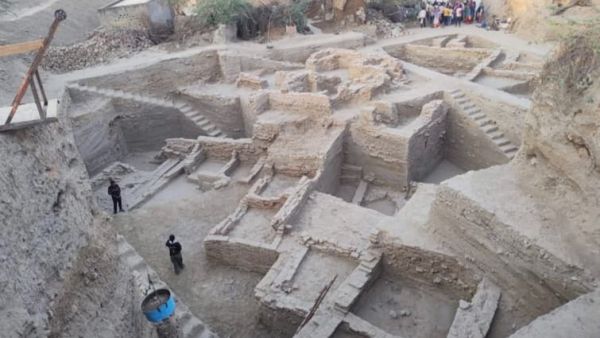
On the Uttar Pradesh–Rajasthan border in the Braj region near Govardhan Hill, an excavation by the Archaeological Survey of India (ASI) in the Deeg area of Rajasthan has potentially added a new chapter to Indian history. Over the past two years, the ASI has uncovered remnants of a now-dried river believed to date back to the Saraswati era. Alongside this, the discovery of ancient human settlements, religious idols, industrial structures, and pottery dating back several millennia presents strong evidence that the Mahabharata is not merely a mythological text but a historical reality. These findings indicate that Indian civilization may have been far ahead of its time, even as the rest of the world was just beginning its civilizational journey.
Under the leadership of ASI Jaipur Circle Superintendent Archaeologist Dr. Vinay Gupta, the excavation in the Bahaj area of Deeg has unearthed both Painted Grey Ware (PGW) and Ochre Coloured Pottery (OCP). Among these, the OCP pottery is estimated to be over 5,000 years old or 3000 BCE, closely aligning with the Mahabharata period as described in Hindu scriptures and traditions. Previous excavations by the ASI at Sinauli and Ganesh Jodhoura have also linked OCP pottery directly to the Mahabharata era. Notably, the OCP pottery in Deeg was recovered from a depth of over 20 meters, further indicating its antiquity.
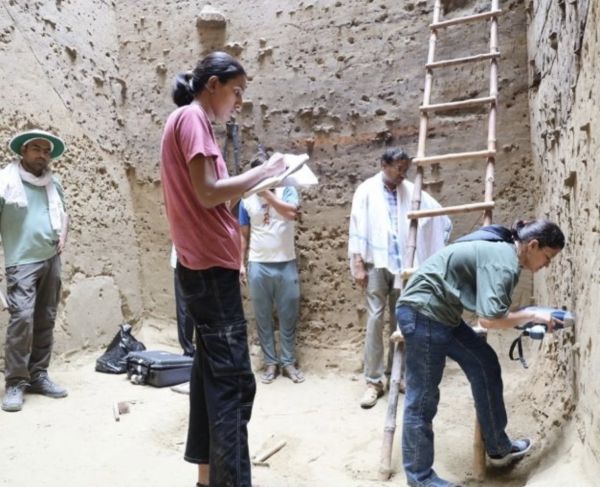
While NCERT textbooks currently date the Mahabharata period to around 3,000 years ago (800 to 1000 BCE), based on the excavations carried out in the 1950s by former ASI Director General B.B. Lal at Hastinapur and Delhi where Painted Grey Ware (PGW) pottery dated to 1200–800 BCE was found and considered the cultural marker of the Mahabharata era, later discoveries have challenged this view. Excavations conducted in the late 1990s at Ganesh Jodhoura, and later in Sinauli First in 2005 by ASI Archaeologist D.V. Sharma then in 2018 by Dr. Sanjay Manjul have clearly indicated that it was not PGW but the Ochre Coloured Pottery (OCP) culture that is more closely linked to the Mahabharata period.

The findings from Deeg suggest that the established timeline of the Mahabharata era may need revision potentially pushing it back to over 5,000 years ago. This would mark a significant shift in Indian historical understanding, comparable to how the excavations at Rakhigarhi challenged and debunked the Aryan Invasion Theory. Speaking to ABP News, Dr. Vinay Gupta, Superintendent Archaeologist of the ASI’s Jaipur Circle and lead investigator of the Deeg excavation, said, “While we are awaiting exact scientific dating of the OCP culture unearthed at Deeg, there is a strong possibility that the OCP pottery, found more than 60 feet below the surface, could date to 3000 BCE or even earlier.
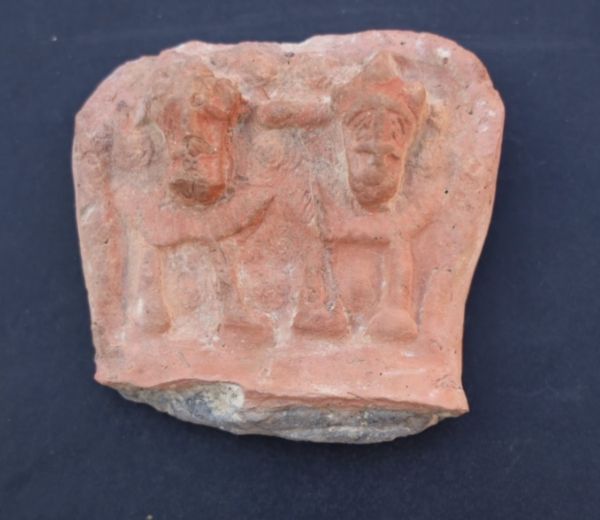
One of the standout discoveries from the Deeg excavation is a possibly 3500 year-old Anthropomorphic figurines of Lord Shiva and Mata Parvati with three votive discs. Until now, it was widely believed that ancient worship of Shiva was limited to the symbolic Shivling. However, this anthropomorphic depiction of Shiva and Parvati suggests that idol worship in divine male-female form was practiced much earlier than previously assumed.
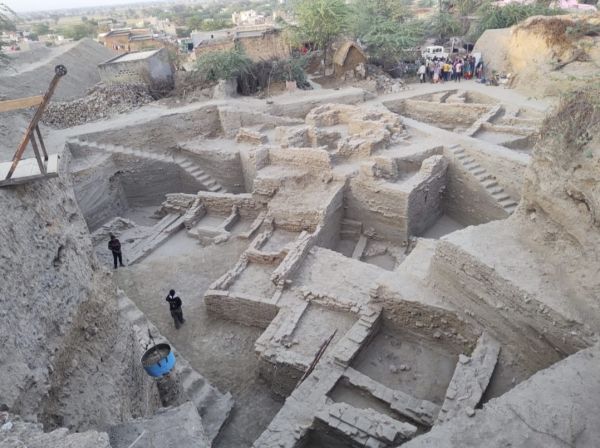
Also found is a possibly 2,000 year old idol of the Ashwini Kumaras divine twin horsemen mentioned among the 33 Vedic deities. Furthermore, a statue resembling Virupaksha Lord Shiva with distinct moustaches, estimated to be about 2,300 years old, was uncovered. This challenges the previous belief that worship of Virupaksha Shiva in anthropomorphic form began only during the Gupta period, around 1,500 years ago or 5th Century.
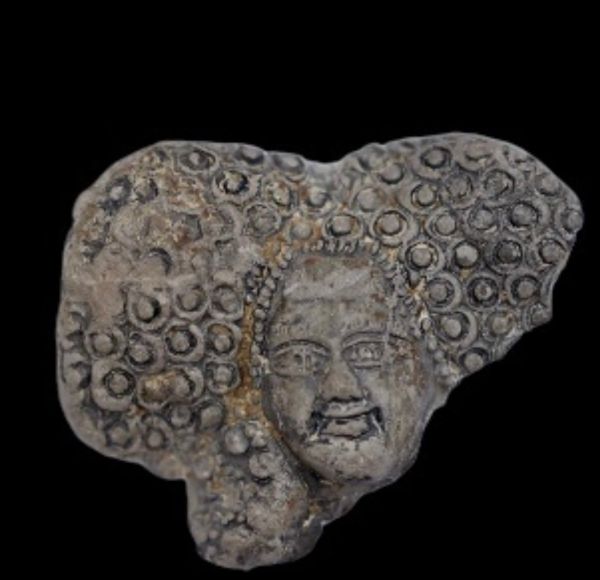
Iron objects were also discovered alongside the OCP pottery during the Deeg excavation. Preliminary assessments suggest these iron objects could potentially be around 5,000 years old or date back to 3000 BCE. If confirmed through scientific testing, this discovery could significantly challenge the global understanding of iron usage, which currently credits Mesopotamia with its earliest use around the same period. Such a finding would once again debunk the Aryan Invasion Theory, which postulated that iron was introduced to India by incoming Aryans, and instead will tell the whole world that India was using iron contemporaneously with or even earlier than, the Mesopotamian civilization.
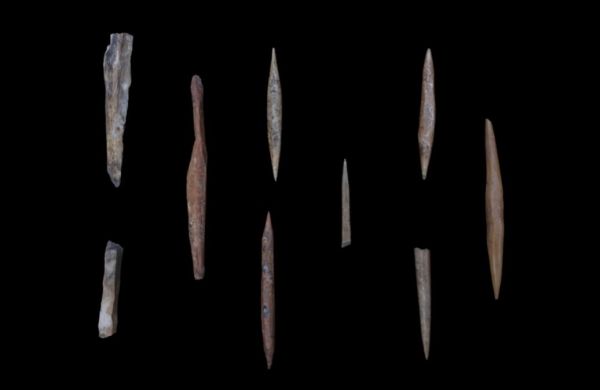
Speaking to ABP News, Dr. Vinay Gupta, Superintendent Archaeologist of ASI Jaipur Circle, maintained a cautious stance on Iron found alongside OCP layer. He said, “We need to be very careful regarding the iron findings. These artifacts were found within or just above the OCP layer. While it is unlikely that they date back to 4000 BCE, based on the stratigraphy, there is a possibility they could be from around 3000 BCE. However, since this would be a major breakthrough, it’s best not to speculate prematurely. We must wait for the scientific dating. If the results align with our expectations, this could be a landmark moment in Indian archaeology.”
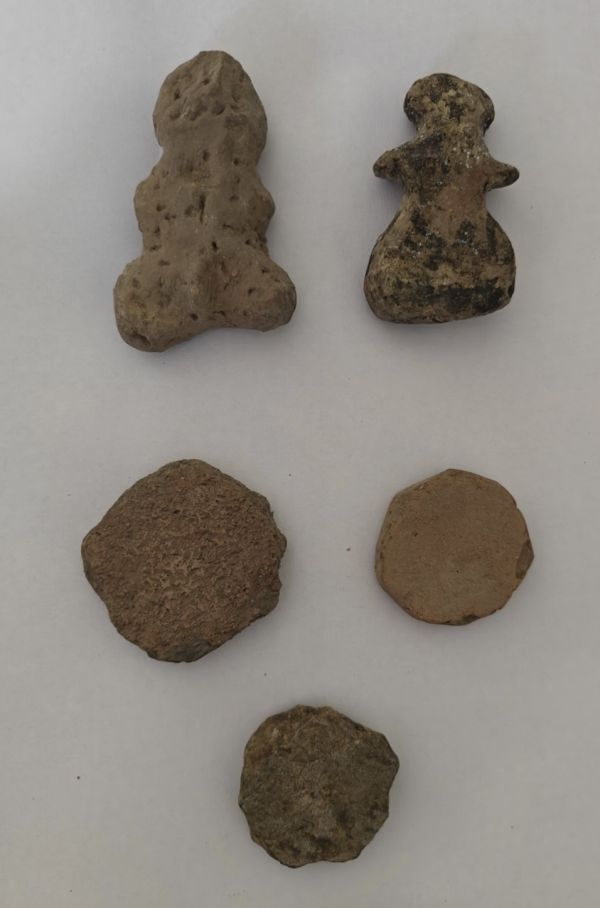
In addition to raw iron artifacts, the Deeg excavation site has revealed evidence of advanced metallurgical activities, including an ancient iron smelting facility. Archaeologists have also uncovered a gemstone workshop and tools crafted from animal bones, such as needles and pens. Furthermore, Paleolithic tools and weapons, potentially dating back tens of thousands of years and used by early humans, were found at the site. Jewelry made from conch shells and other ornaments predating even the Pre-Harappan civilization have also been discovered, demonstrating a highly evolved tradition of jewelry-making in ancient India. These finds also suggest that India had a highly advanced and technologically equipped civilization thousands of years ago.
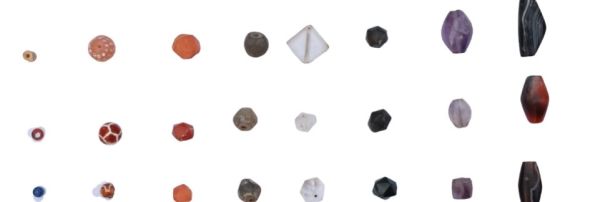
According to local traditions, the Bahaj village of Deeg where this excavation was conducted is founded by Vajranabh, the great-grandson of Lord Krishna. The site is close to the sacred Govardhan Hill. The excavation has also revealed four millennia of continuous historical occupation, with stratified layers pointing to periods ranging from the Mauryan, Shunga, Kushan, to pre Mauryan times. These findings collectively reflect a continuous and sophisticated Indian civilization.
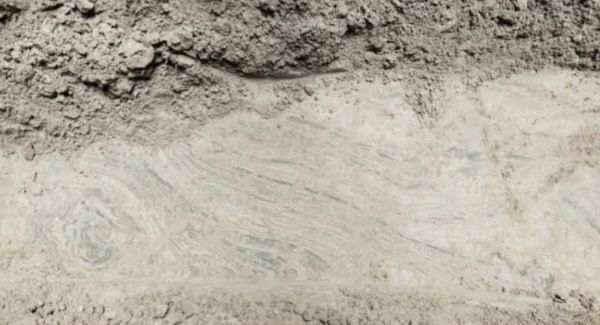
Dr. Vinay Gupta, ASI Superintendent, reports that more than 400 artifacts have been recovered. These include a Buddhist relic casket, ancient seals, a brass lamp, 2,500-year-old stone ring and 2 unbaked sealings inscribed with Brahmi letters but among the most intriguing discoveries is the dry riverbed found at the lowest layer of the excavation at around 23 metres. This has drawn the attention of historians, as it challenges the existing belief that mounds in Mathura, Mainpuri, and Mewat were formed simply by continuous habitation over generations. According to Dr Vinay Gupta, the finding of a riverbed underneath the settlement layers not only destroyed the existing beliefs but now suggests that people of this area settled on top of a dried river and began building a new civilization from there.
There is speculation that this dried river could be a tributary or branch of the ancient Saraswati River, or a river similar to the one described in the Rigveda era. Dr. Vinay Gupta remains cautious, stating that only scientific dating can confirm whether this river is the dried-up Yamuna, Saraswati, or another river altogether but he notes that about 150 kilometers to the west lie Harappan civilization sites where traces of the Saraswati have been found, while to the east begins the Ganga-Yamuna Doab and it’s in between. Thus this geographical positioning raises the possibility that the same climatic and geological factors that led to the drying up of the Saraswati may have also impacted this river. Once scientific dating is completed, we will know the exact era to which this dried river belongs. However, two things are certain: this dried river appears very ancient possibly from the Saraswati era and its discovery could play a significant role in identifying new channels of the Saraswati River.
-
Horror in search for missing woman as police make find on beach 140 miles away

-
Arsenal set to announce three new signings with Mikel Arteta next transfer step crystal clear

-
Chelsea given £45m escape route before PSR deadline as the Premier League prepare investigation

-
COVID-19 cause bombshell as new report sheds fresh light on coronavirus origin

-
Longest-running death row inmate's chilling final words revealed
